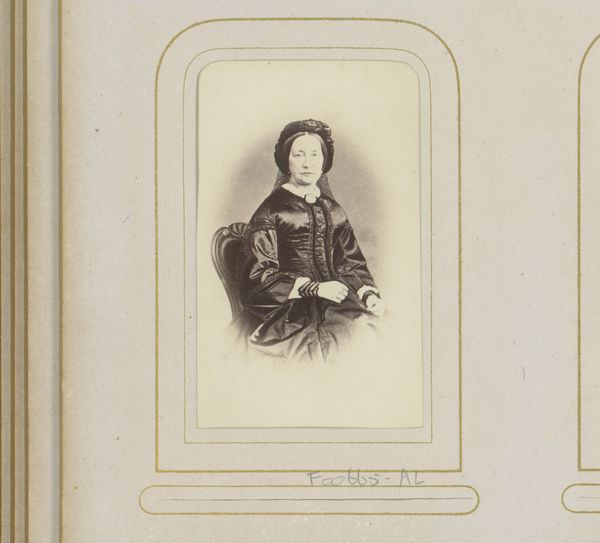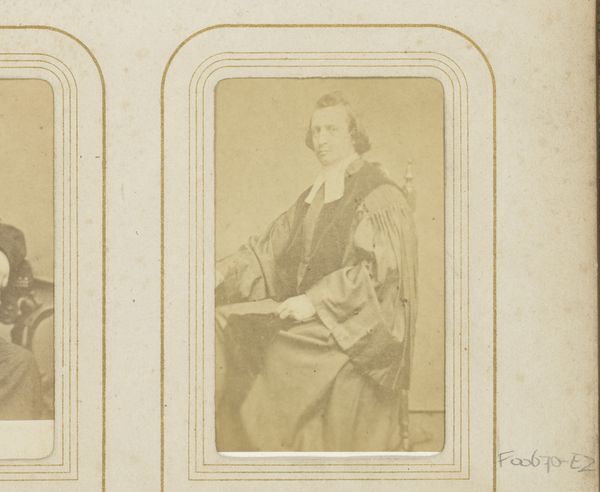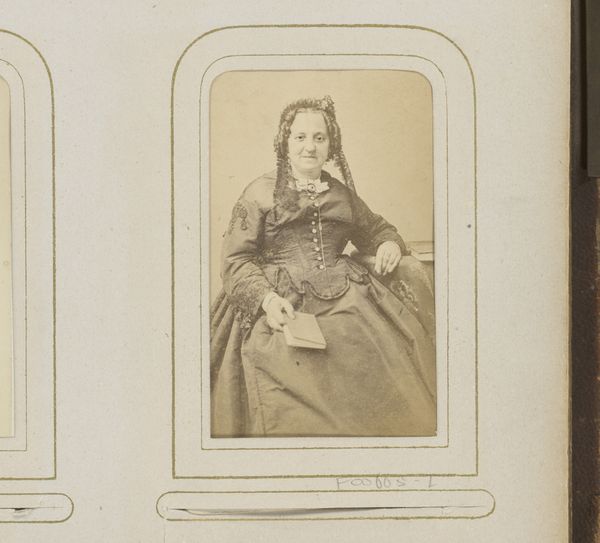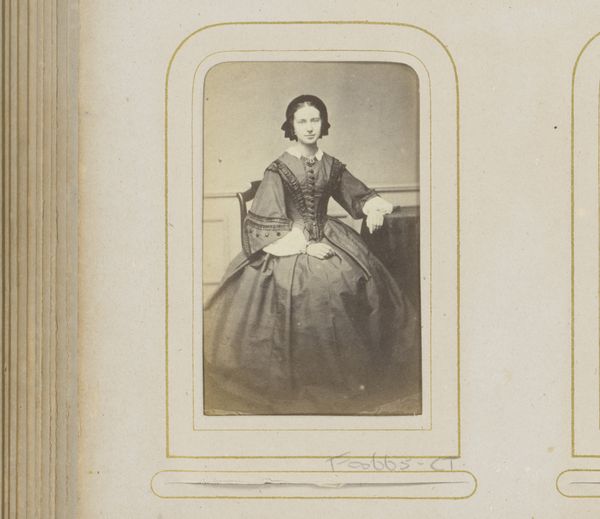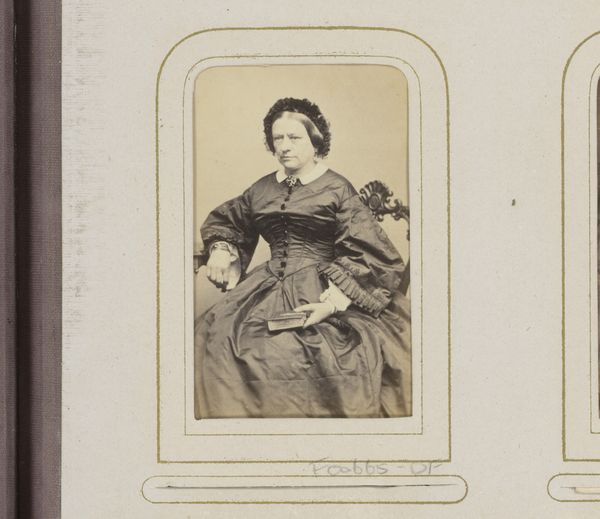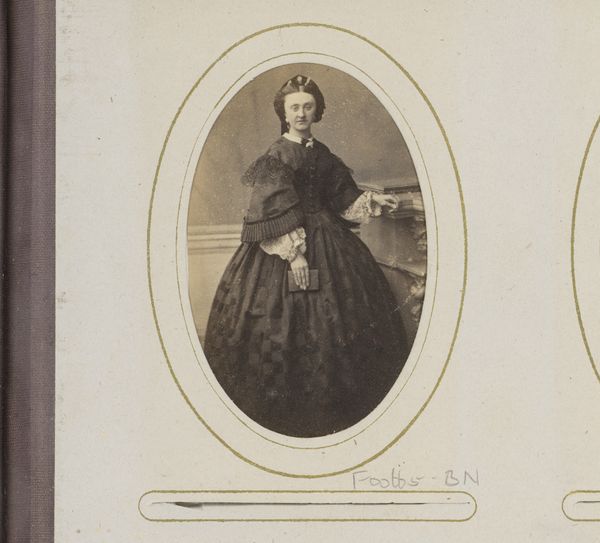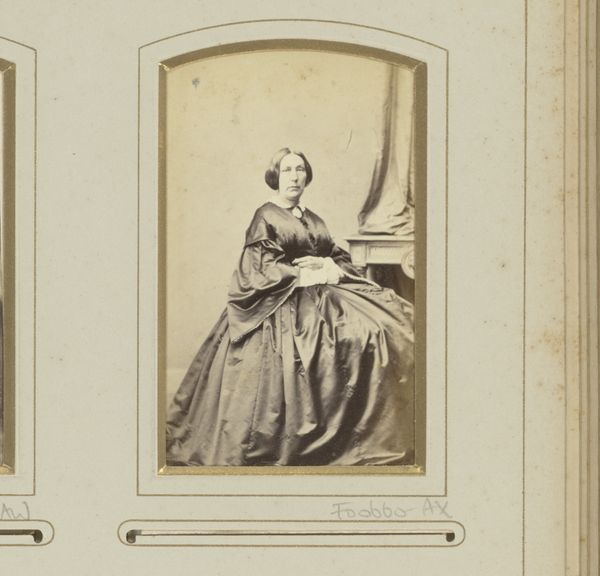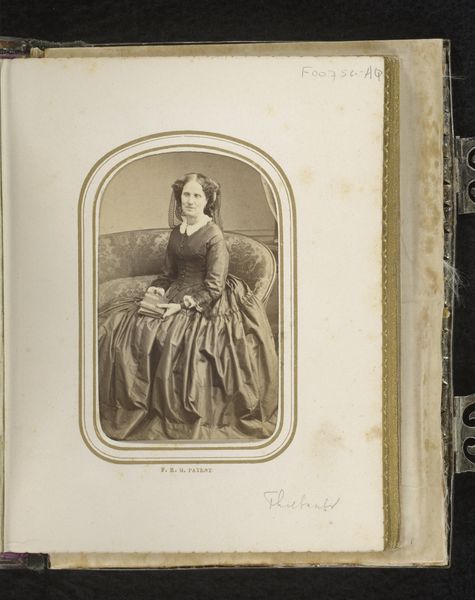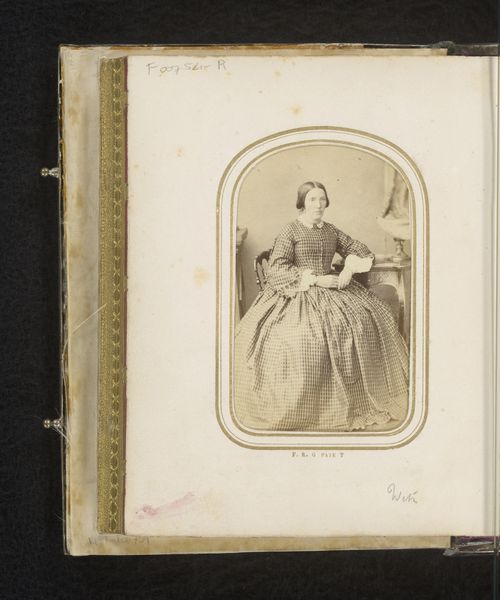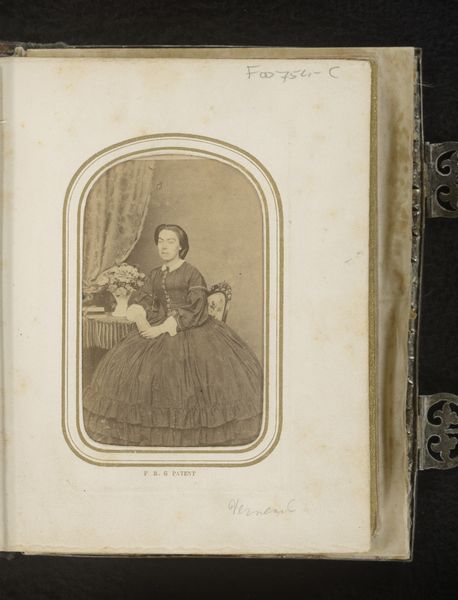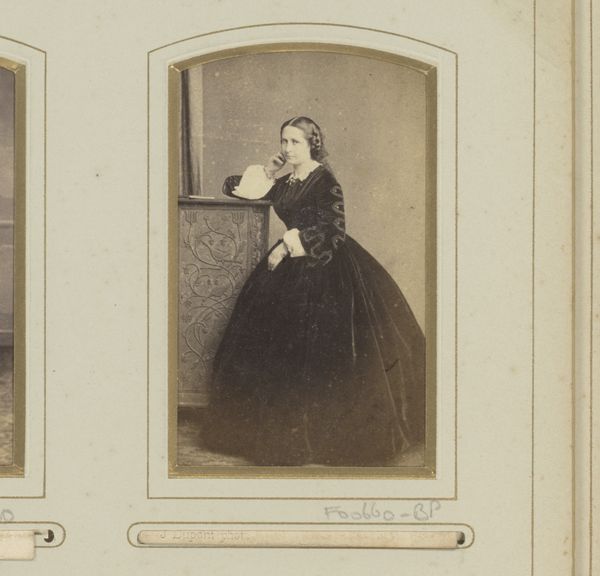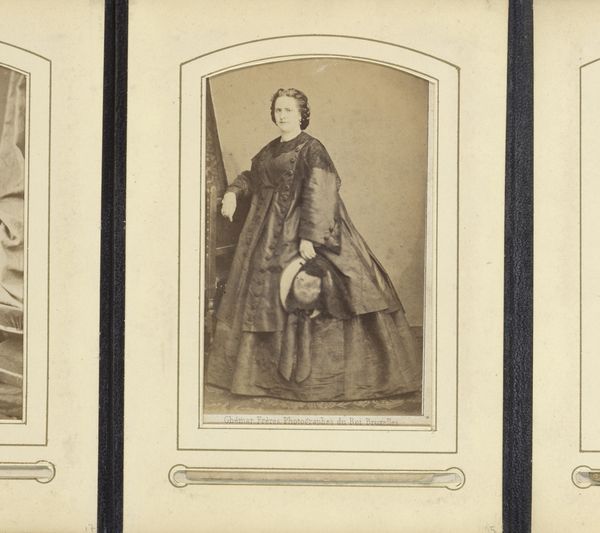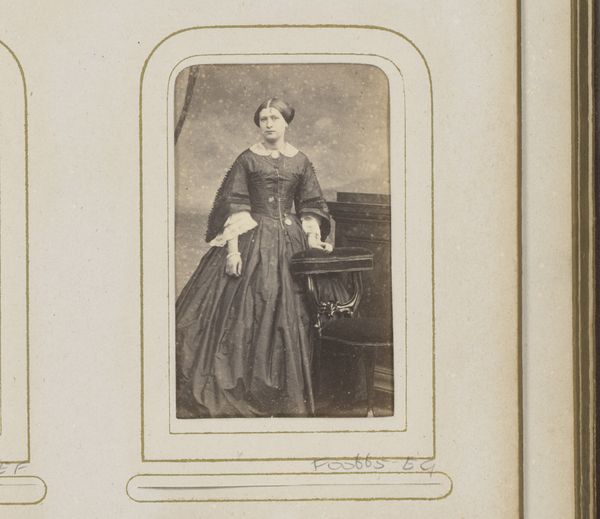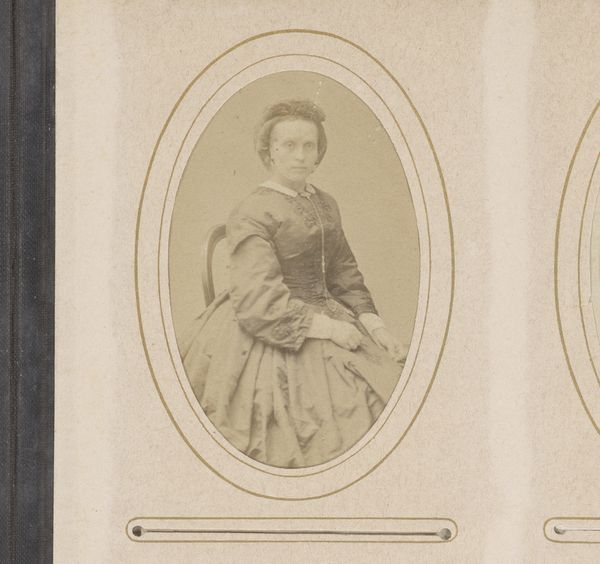
photography
#
portrait
#
photography
#
19th century
#
realism
Dimensions: height 82 mm, width 50 mm
Copyright: Rijks Museum: Open Domain
Curator: This is a photographic portrait of Ida Aletta Tjallingii, created sometime between 1860 and 1890. It's a captivating glimpse into the past. Editor: It’s interesting how photography, initially seen as a scientific tool, quickly evolved into portraiture, previously the domain of painting. I find the details in her dress particularly striking - all those layers of fabric! How does the material quality of the image affect your reading of the work? Curator: Precisely! The shift in artmaking due to the accessibility and the relative ease of photography – at least compared to painting – is very relevant. The proliferation of photographic studios democratized portraiture and therefore also affected material culture. It is crucial to analyze what photography did for art, what the production of affordable images did for personal identity and how photographic studios were set up and run like factories to provide that. Editor: That's fascinating. Seeing the production as a factory brings a whole new perspective. What kind of labor would have been involved in creating an image like this? Curator: Consider the labor behind the creation of the garments themselves - the textile production, the sewing, likely done by different hands and likely across different geographical areas. Then consider the photographic production process: preparing the chemicals, posing the sitter, developing the image… and, finally, the presentation and dissemination. Were these photos often put into albums, for example, creating family narratives through material objects? What social networks did this photograph create and support? Editor: So it becomes about more than just capturing an image of a person. It's about the whole network of production, distribution, and consumption surrounding that image. I hadn’t thought of it that way. Curator: Exactly! Analyzing art through a materialist lens reveals these networks, prompting us to investigate the often unseen labor and economic forces shaping what we perceive as 'art'. Editor: That makes me appreciate the photograph on a deeper level. It's not just a picture; it's a trace of so much more. Curator: And that deeper level, acknowledging process and context, lets us connect the art to a wider cultural web.
Comments
No comments
Be the first to comment and join the conversation on the ultimate creative platform.
